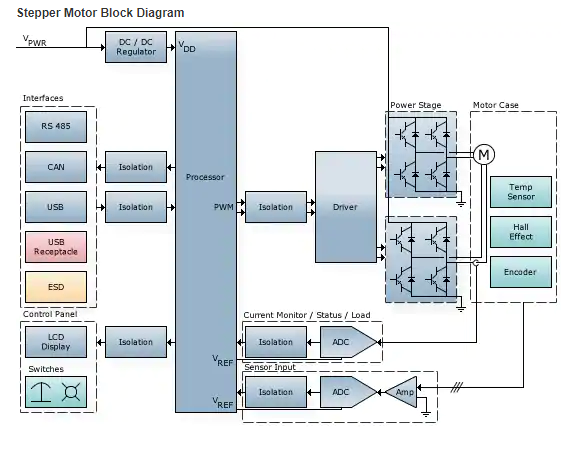Motor Control
Motor Control Applications - Stepper Motor
Stepper motors are inexpensive and rugged because they have fewer mechanical parts. They are brushless, easy to position, and are commonly used in automation systems, although they are small low power devices as compared to other motors...
They move in steps based on pulses sent to the stator windings, thus they do not have a horsepower rating because they do not actually rotate continuously. The speed of the motor is controlled by the frequency of the pulses. The stepper motor is used for precise positioning with a motor, such as hard disk drives, robotics, antennas, telescopes, and some toys. Stepper motors cannot run at high speeds, but have a high holding torque. A stepper motor can be thought of as a "digital" version of electric motor, because it converts digital pulses into fixed steps such that a computer system can easily "step" the rotation of the motor for precise control. A stepper motor is low cost, has simple drive electronics, is accurate, has a decent holding torque, and operates at moderate speeds. High acceleration and heavy loads that still require accuracy need a servo motor, the predecessor of the stepper motor.

This design is for reference only. The design, as well as the products suggested, has not been tested for compatibility or interoperability.